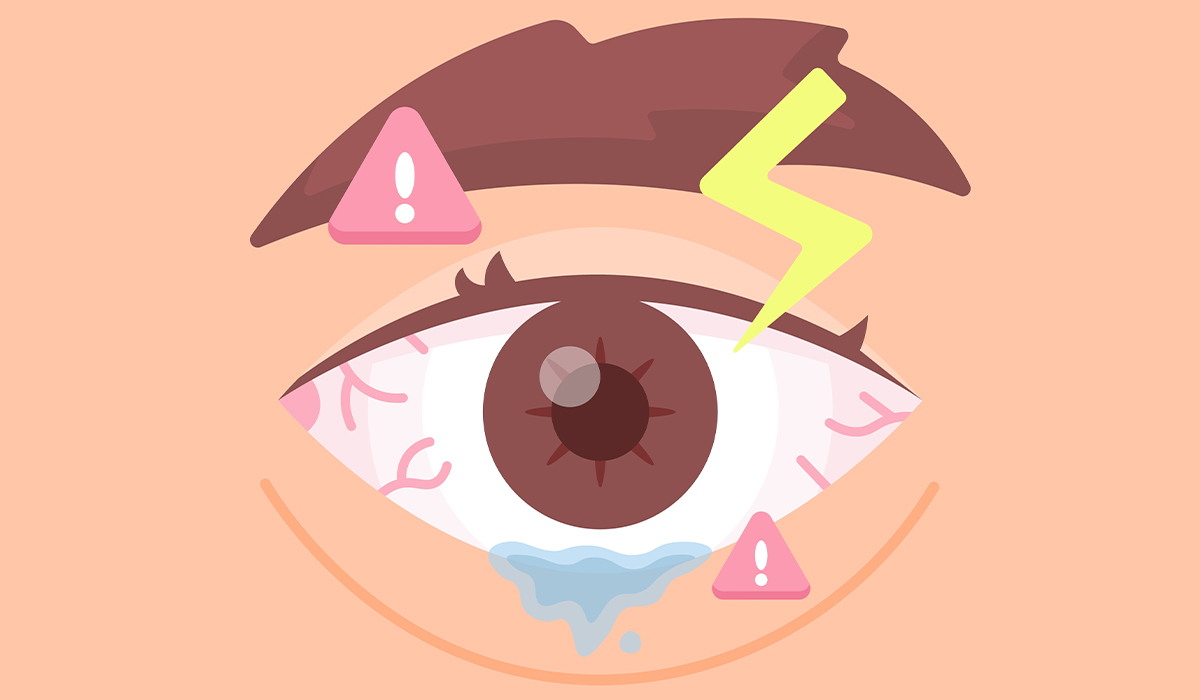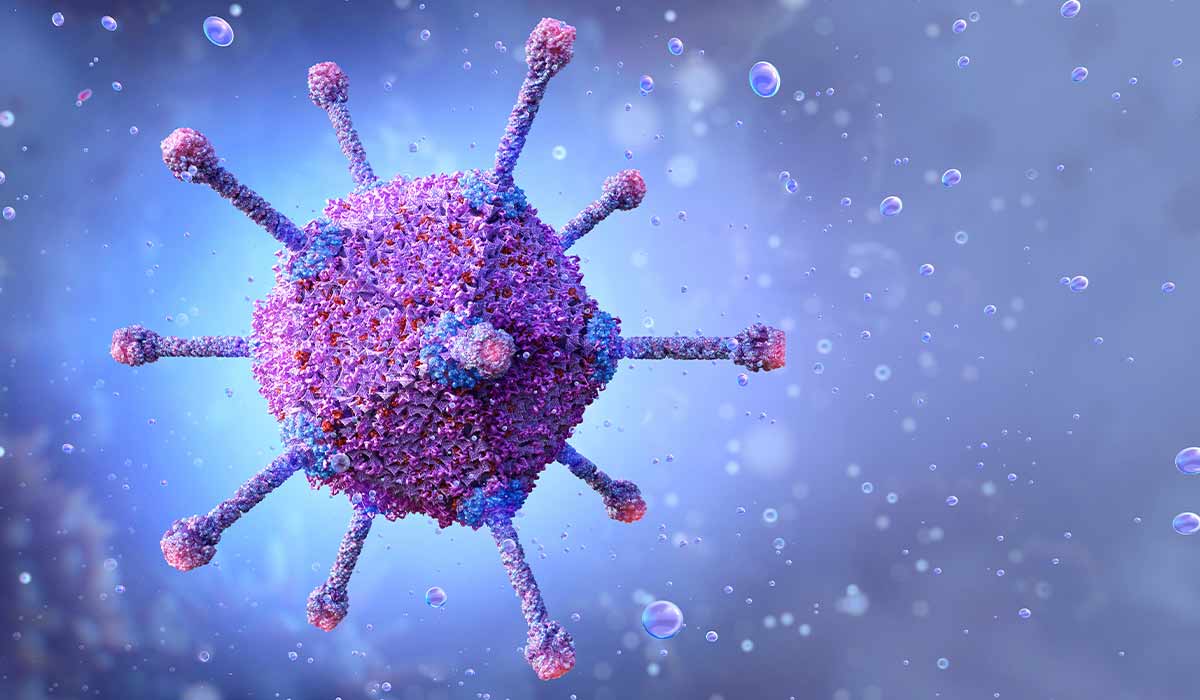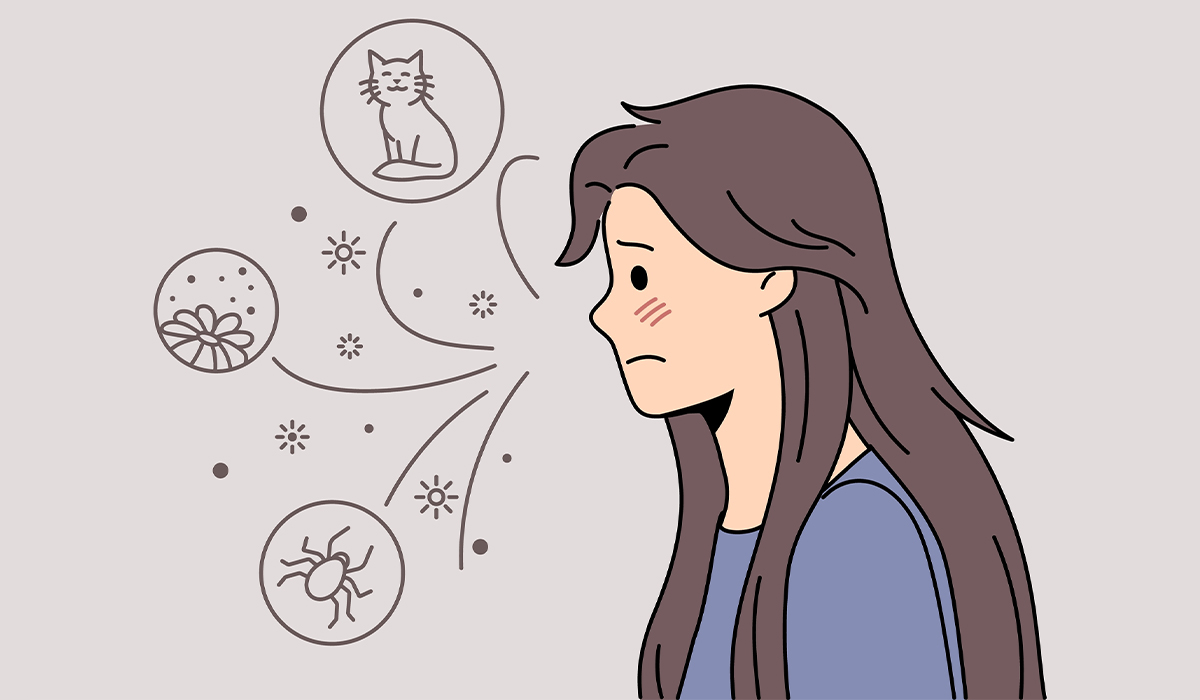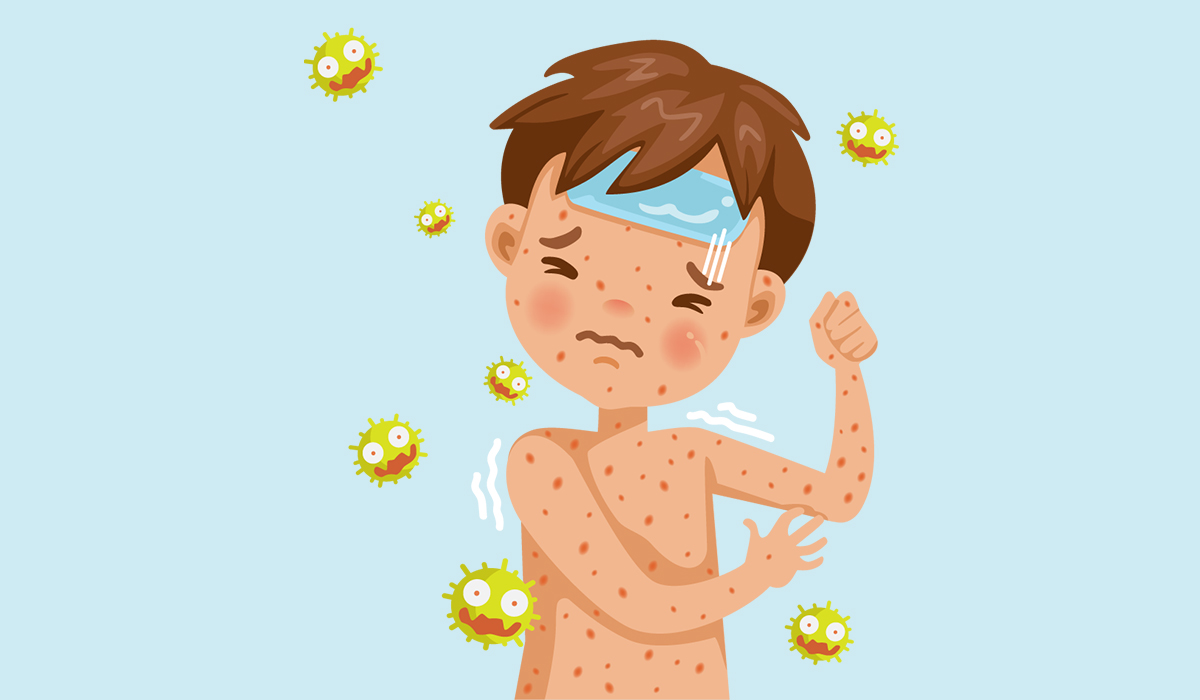Conjunctivitis is an inflammation of the mucous membrane covering the back surface of the eyelids, passing at their base to the eyeball, which it covers, passing in its central part into the cornea. It forms recesses at the bottom of the eyelids.
Conjunctival and mucous glands are scattered in the conjunctiva. Thanks to them, the friction between the eyelids and the cornea is minimal. In addition, it has a protective role. Inflammation causes that the function of the conjunctiva is not fulfilled. The eyeball is then exposed to many harmful factors.
There are different types of pink eye. Among inflammations, there are bacterial, viral, chlamydial, and fungal. Non-infectious conjunctivitis is inflammation: allergic, chemical, reactive, and accompanying.
Viral conjunctivitis![]() , often referred to as viral eye inflammation, can occur alone or as one of the symptoms of a viral infection. It may accompany, among others:
, often referred to as viral eye inflammation, can occur alone or as one of the symptoms of a viral infection. It may accompany, among others:
The most common cause of infection is the transmission of germs to the eyes by dirty hands. There are also situations of “transition” of disease from an infected nose or paranasal sinuses. Viral conjunctivitis can also be transmitted through contact with sick people.
Bacterial conjunctivitis![]() can have an acute and chronic course. In the first case, it has a rapid onset, lasting about two weeks.
can have an acute and chronic course. In the first case, it has a rapid onset, lasting about two weeks.
Pink eye is chronic when symptoms persist for more than four weeks. A smaller amount of mucopurulent discharge also characterizes it.
A related issue is mucopurulent conjunctivitis caused by Neisseria gonorrhoeae (bacteria). This type of inflammation is nothing more than gonococcal conjunctivitis.
Allergens cause allergic pink eye. They cause the inflammatory cells to start producing antibodies against them.
Then, mast cells in the eye are stimulated to produce histamine, after which other inflammatory cells have substances that cause troublesome symptoms.
There are several types of allergic conjunctivitis, e.g.,:
Symptoms of conjunctivitis![]() depend on the underlying disease. Some of them, however, will appear regardless of the etiology of inflammation.
depend on the underlying disease. Some of them, however, will appear regardless of the etiology of inflammation.
Common symptoms of conjunctivitis, regardless of the cause, include:

Photophobia, lacrimation, and palpebral fissure narrowing are collectively called the irritation triad.
During bacterial conjunctivitis, purulent discharge from the eyes appears, which can stick the eyelids and eyelashes together. There will be a lot of it right after waking up. The secretion during bacterial conjunctivitis allows you to confidently say that pink eye is bacterial (a virus is never responsible for such a condition).
On the other hand, conjunctivitis is caused by Neisseria gonorrhoeae bacteria![]() . At first, there is intense swelling of the eyelids, which causes tightening of the eyelid fissure. There may also be severe pyorrhea.
. At first, there is intense swelling of the eyelids, which causes tightening of the eyelid fissure. There may also be severe pyorrhea.
The condition is usually viral if the eyes are red and watery and there is a cough, sore throat, runny nose, and fever. Some people also experience swollen lymph nodes near your jaw. In those circumstances, you should immediately visit your doctor.
Allergic conjunctivitis usually concerns individuals only once a year, e.g., in the spring. It can also be caused by a specific allergen, e.g., dust or pet hair. If, in addition, we have a watery, runny nose or sneeze, we feel worse, then the allergy is probably the source of inflammation.
Treatment of pink eye is not complicated. However, it should be conducted based on the factors that led to the development of the disease. Simple remedies may work, but consulting a doctor is recommended for most cases.
Viral conjunctivitis![]() usually goes away independently and does not require medical intervention. Antibiotics are ineffective in this case. You can use cool compresses and eye drops to eliminate the unpleasant symptoms of the disease.
usually goes away independently and does not require medical intervention. Antibiotics are ineffective in this case. You can use cool compresses and eye drops to eliminate the unpleasant symptoms of the disease.
Applying tea essence is not recommended as it may further irritate the eye. Also, remember that many people are allergic to eyebright herbs, so use gels and ointments with this plant carefully.
Ailments resolve after four to seven days with symptoms of upper respiratory tract infection (if it is the cause). However, you should remember about hygiene, frequent hand washing, not rubbing your eyes, etc. Otherwise, it can transform into bacterial conjunctivitis.
Bacterial eye infections are treated with antibiotics![]() , which can be given as drops, ointments, or tablets. Applying drops and creams requires a lot of patience because some should be used several times a day.
, which can be given as drops, ointments, or tablets. Applying drops and creams requires a lot of patience because some should be used several times a day.
Drugs act on most pathogens that are a potential cause of bacterial conjunctivitis. Bacterial conjunctivitis should always be consulted with a specialist.
Infections with sexually transmitted pathogens often affect newborns during childbirth. Prompt treatment with antibiotic eye drops can cure the condition in toddlers.
In the case of allergic conjunctivitis![]() , you should see a doctor to confirm the suspicion that an allergy to some substance causes it. The specialist may recommend antihistamines.
, you should see a doctor to confirm the suspicion that an allergy to some substance causes it. The specialist may recommend antihistamines.
In most cases, the symptoms of acute allergic conjunctivitis disappear spontaneously after the allergen is removed or after taking the above-mentioned agents.

Supportive treatment for this type of pink eye is applying cold compresses – it usually brings significant relief.
In the case of allergic seasonal conjunctivitis, the most appropriate course of action is often the so-called specific immunotherapy, i.e., desensitization.
On the other hand, in exacerbations, antihistamines are mainly used in the form of eye drops and oral. It should be remembered that for the best therapeutic effect, it is best to start therapy with them 7-10 days before the expected exposure period to allergens (pollen season of a given plant). Treatment of spring allergic conjunctivitis does not differ from typical allergological treatment.
Treatment of atopic conjunctivitis and keratitis is challenging. To avoid unpleasant consequences, it should be carried out under the strict supervision of specialists.
There are some home remedies to help manage pink eye. These techniques support professional therapy using drugs prescribed by an ophthalmologist.
Chamomile![]() has many anti-inflammatory compounds and antimicrobial properties. That is why it helps soothe irritations. You can use chamomile in eye compresses. Just remember that chamomile may be a potent allergen, so allergic people should be careful with it.
has many anti-inflammatory compounds and antimicrobial properties. That is why it helps soothe irritations. You can use chamomile in eye compresses. Just remember that chamomile may be a potent allergen, so allergic people should be careful with it.
Among the home remedies for treating conjunctivitis, sage![]() compresses also deserve attention. Sage infusion eliminates irritation and redness, has anti-inflammatory properties, and improves the condition of swollen eyelids.
compresses also deserve attention. Sage infusion eliminates irritation and redness, has anti-inflammatory properties, and improves the condition of swollen eyelids.
Calendula![]() has primarily anti-inflammatory properties. Reduces eye redness and relieves itching and burning. It causes allergic reactions much less frequently than chamomile, so it is better suited for home treatment of conjunctivitis in allergy sufferers.
has primarily anti-inflammatory properties. Reduces eye redness and relieves itching and burning. It causes allergic reactions much less frequently than chamomile, so it is better suited for home treatment of conjunctivitis in allergy sufferers.
Cold compresses![]() are a known remedy for edema because they constrict blood vessels and tissues locally. At the same time, they mobilize the body to produce antibodies that help fight inflammation.
are a known remedy for edema because they constrict blood vessels and tissues locally. At the same time, they mobilize the body to produce antibodies that help fight inflammation.
Conjunctivitis is a common eye disease. Nevertheless, with reasonable prevention, you can significantly decrease the risk of its occurrence. The subsequent advice seems obvious, but most individuals with pink eye forget about them.
There are some basic rules![]() :
:

Preventive recommendations in case of allergy to pollen of anemophilous plants:
Preventive recommendations in case of allergy to dust mites:
People allergic to dust mites should not clean attics, dusty books, and paper stores or beat carpets and kilims.
Preventive recommendations in case of allergy to animal hair:
If you are allergic to an animal staying in the apartment of the allergic person, you can:
It turns out that both bacterial and viral conjunctivitis are contagious![]() . You can get infected through a direct connection with an infected person. The use of cosmetics is also conducive to infection. It is worth noting that the greatest threat to patients is inflammation caused by adenoviruses. Pink eye in adults can be dangerous for children, just as conjunctivitis in children can spread to adults.
. You can get infected through a direct connection with an infected person. The use of cosmetics is also conducive to infection. It is worth noting that the greatest threat to patients is inflammation caused by adenoviruses. Pink eye in adults can be dangerous for children, just as conjunctivitis in children can spread to adults.
We usually think that everything is fine with our eyes![]() . However, the only way to confirm this assumption is to visit an ophthalmologist. Very often, diseases such as glaucoma, diabetes, or degenerative problems do not give any signs of their occurrence and slow development. The examination with dilation of the pupils is the only chance for early detection of such diseases.
. However, the only way to confirm this assumption is to visit an ophthalmologist. Very often, diseases such as glaucoma, diabetes, or degenerative problems do not give any signs of their occurrence and slow development. The examination with dilation of the pupils is the only chance for early detection of such diseases.
Try not to strain your eyes. If you spend a lot of time in front of the computer, try to look at objects in the distance from time to time. If you can, look out the window. Remember to blink during visual work – when you do not, the eye's surface gets dry. Dry eyes cause burning, redness, and a foreign body/sand feeling in the eyes and can lead to unpleasant complications.
Table of Contents

Eye infections are common conditions where an eye becomes red, itchy, and painful. What are the common causes? How is… read more »

Strabismus is an eye misalignment, a condition when eyes look in different directions. It can affect both children and adults.… read more »

Adenovirus is a pathogen commonly found in the environment. Find out how to recognise adenoviral infections. Learn about treatment and… read more »

Astigmatism is one of the most common vision defects in the world. It causes blurred vision of objects both at… read more »

Blurry vision is a symptom that can indicate a minor eye condition, but also a systemic disease or cancer. Find… read more »

Myopia, also called nearsightedness, is an eye condition in which distant objects appear blurry. Here is everything you need to… read more »

Allergies happen when the immune system starts a reaction against certain substances, such as pollens, pet fur, food, or medication.… read more »

A cataract occurs when the natural eye lens becomes cloudy. The condition is most often associated with older age. When… read more »

Rubella is an infectious disease caused by a specific type of virus. It is most commonly diagnosed in children. Find… read more »